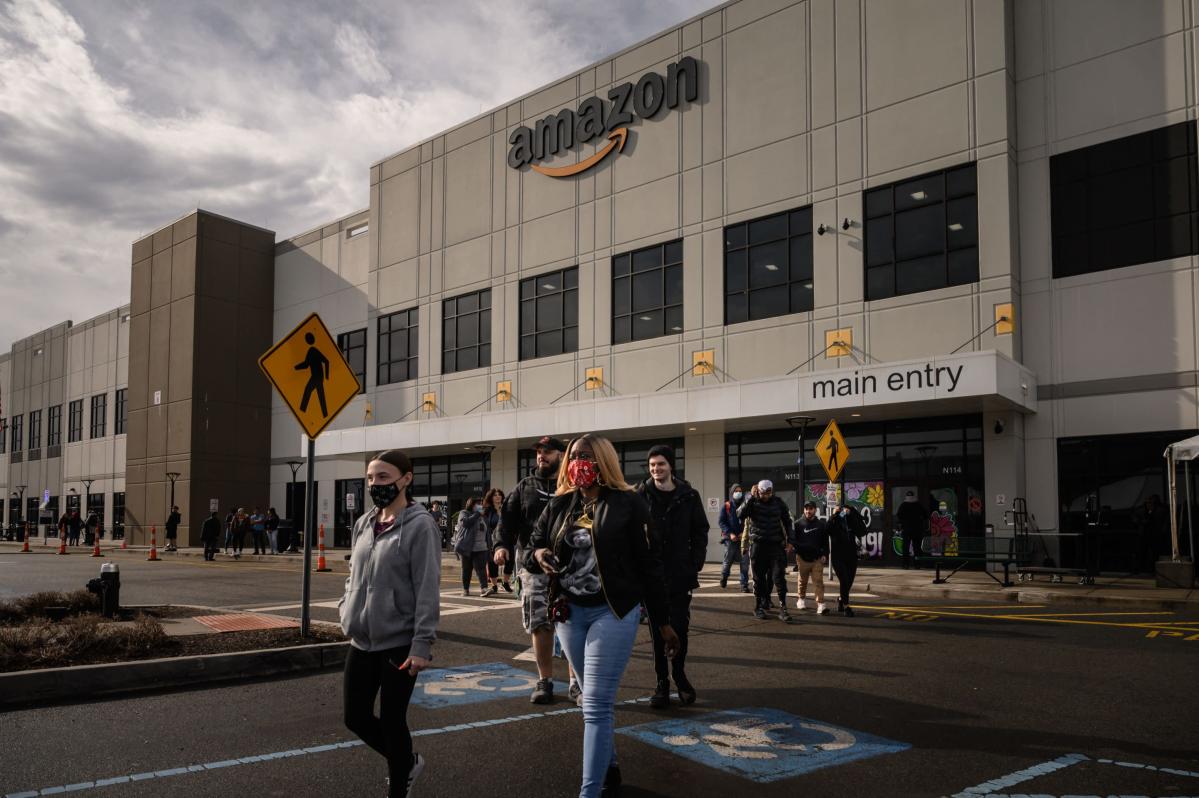Amazon’s warehouse problems? It’s running out of workers to hire, and has too much space

Amazon’s no-frill, low-wage, high-turnover labor model is beginning to show signs of stress.
The tech giant could run out of workers to hire for its warehouses by 2024, according to a leaked Amazon internal research memo from mid-2021 seen by the publication Recode, putting its service quality, growth plans, and quick labor churn model in a pinch.
“If we continue business as usual, Amazon will deplete the available labor supply in the U.S. network by 2024,” the leaked report indicated.
The memo said Amazon had six levers it could use to delay the labor crisis by a few years—including raising wages and increasing automation—but the only way to significantly alter this timeline is to make sweeping changes to the way it manages its employees.
Some regions are facing worse shortages than others. Amazon expected to exhaust its entire available labor pool in the Phoenix, Arizona metro area by 2021, and the availability of staff at its warehouses 60 miles east of Los Angeles will dry up by the end of 2022, the report indicated.
Amazon noted in the memo it calculated the available pool of workers based on characteristics like income level and household proximity to Amazon facilities. The calculations were 94% accurate in predicting which U.S. geographies were understaffed in the lead-up to Amazon Prime day in June 2021 and experienced delivery delays, the report said.
Some of the areas also coincide with places where Amazon is aiming to sublet warehouse space it scooped up during the pandemic-era surge in online shopping. The company is looking to lease 10 million square feet of space and vacate even more by ending leases with landlords, according to Bloomberg, in warehouses in New York, New Jersey, Southern California, and Atlanta.
Rena Lunak, Amazon spokesperson, told Fortune, that “there are many draft documents written on many subjects across the company that are used to test assumptions and look at different possible scenarios, but aren’t then escalated or used to make decisions. This was one of them.”
She added,” It doesn’t represent the actual situation, and we are continuing to hire well in Phoenix, the Inland Empire, and across the country.”
How high is turnover
Amazon has long extolled worker productivity over most everything else and built a talent model designed for turnover at its warehouses, which employ tens of thousands of people to pack and ship the company’s seemingly endless stream of orders.
But while that method worked for years, with Amazon harnessing the churn rate to keep workers motivated and flexible, it appears that the churn may have gotten out of control. Amazon’s attrition rate, which was 123% in 2019, jumped to 159% in 2020, according to the leaked memo. That is well above the overall turnover rates across the broader transportation and warehouse sectors in the U.S., which saw 46% of people jumping ship in 2019 and 59% in 2020, according to the Bureau of Labor Statistics.
Amazon needs to bring down its attrition rates to 2019 levels, to gain three more years of hiring runway, the report said.
A shift in power dynamic
Workers at Amazon have long complained about the stresses unique to their warehouses, from repetitive labor to the computerized face-recognition surveillance and comparatively high injury rates. In one example, the company was slammed for offering water or soda and a candy bar or bag of chips, worth roughly $2, as an incentive to speed the work of warehouse packers working on Easter Sunday.
At an average wage of $16 an hour, according to payscale.com, these issues have made competitors like Walmart and FedEx more attractive workplaces to a number of workers.
In the face of increased competition, Amazon has already bumped its average starting wage for new hires in the U.S. to $18 an hour, Reuters reported, but it could be considering increasing them more. The leaked memo predicted that by every dollar Amazon increases its minimum wage, it adds 7% more workers to its potential hiring pool.
Amazon is also considering automating more of its work. But even with the “conservative” goal of improving warehouse productivity by 25% by 2024 through automation, this would only slightly push back the labor crisis, the report notes.
Changes already
So far, the need for workers has led to the end of some of Amazon’s stringent workplace policies.
“They were so concerned about attrition and losing people that they rolled back all the policies that us, as managers, had to enforce,” Michael Garrigan, a former entry-level manager at Amazon warehouses in Phoenix from 2020 to early 2022, told Recode. “There was a joke among the … managers that it didn’t matter what [workers] got written up for because we knew HR was gonna exempt it. It was almost impossible to get fired as a worker.”
The worker shortages may also give unions more bargaining power. Amazon, which long blocked unionization efforts on the belief that there would be obstacles to business flexibility and warehouse efficiency, finally lost a union battle on April 1 when Amazon workers at a New York warehouse voted to join the independent Amazon Labour Union.
Eager to avoid a growing tide of unionization, Amazon has contemplated blocking posts on a planned internal messaging app that contained keywords pertaining to labor unions, according to a leaked memo reported by The Intercept. The chat room would flag those who contained words like “union” “restrooms” “living wage” “pay raise” and “plantation.”
Editor’s note: This story has been updated with Amazon’s statement.
This story was originally featured on Fortune.com




